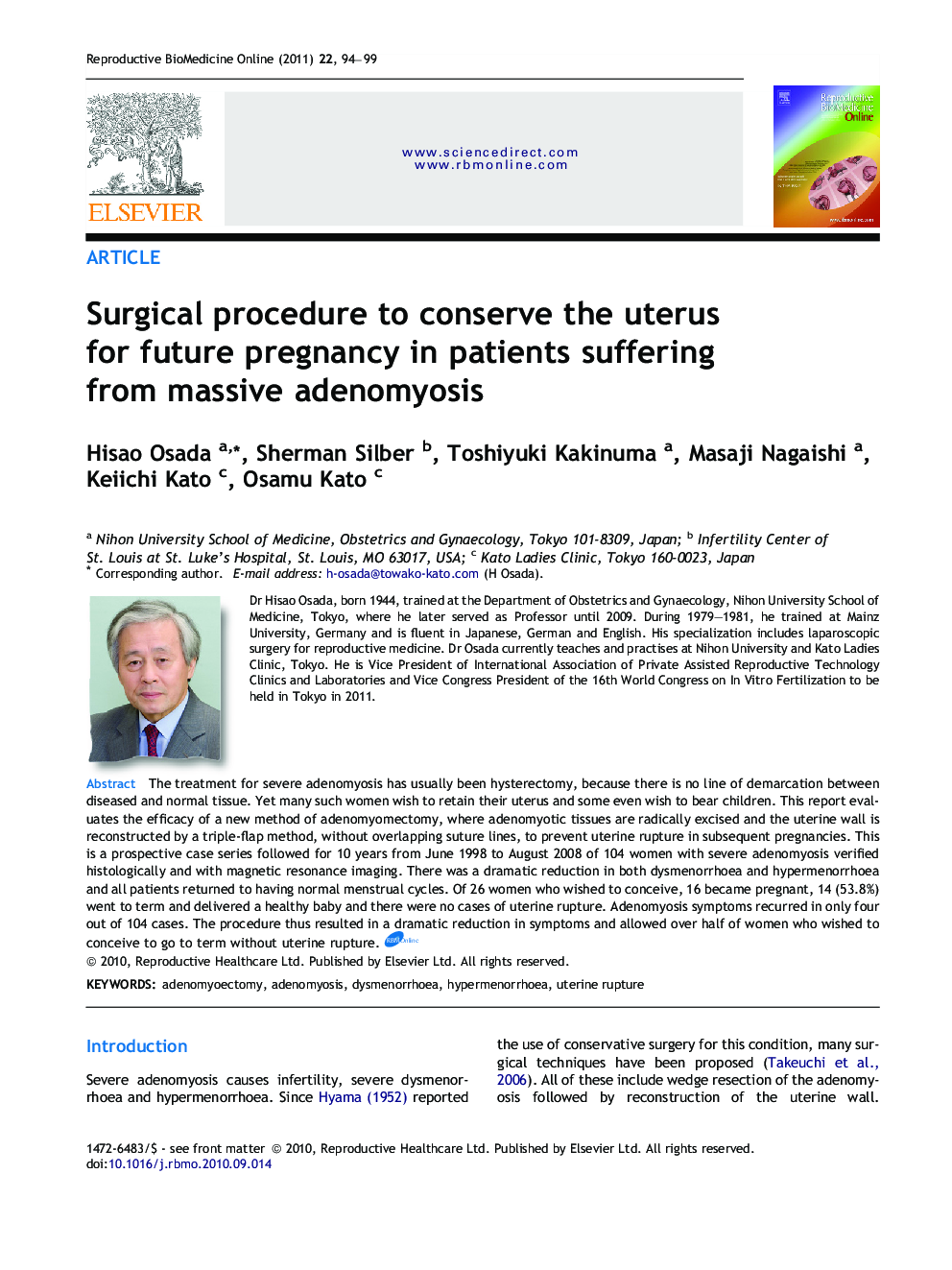| Article ID | Journal | Published Year | Pages | File Type |
|---|---|---|---|---|
| 3971816 | Reproductive BioMedicine Online | 2011 | 6 Pages |
The treatment for severe adenomyosis has usually been hysterectomy, because there is no line of demarcation between diseased and normal tissue. Yet many such women wish to retain their uterus and some even wish to bear children. This report evaluates the efficacy of a new method of adenomyomectomy, where adenomyotic tissues are radically excised and the uterine wall is reconstructed by a triple-flap method, without overlapping suture lines, to prevent uterine rupture in subsequent pregnancies. This is a prospective case series followed for 10 years from June 1998 to August 2008 of 104 women with severe adenomyosis verified histologically and with magnetic resonance imaging. There was a dramatic reduction in both dysmenorrhoea and hypermenorrhoea and all patients returned to having normal menstrual cycles. Of 26 women who wished to conceive, 16 became pregnant, 14 (53.8%) went to term and delivered a healthy baby and there were no cases of uterine rupture. Adenomyosis symptoms recurred in only four out of 104 cases. The procedure thus resulted in a dramatic reduction in symptoms and allowed over half of women who wished to conceive to go to term without uterine rupture.The usual treatment for severe adenomyosis has usually been hysterectomy, because there is no line of demarcation between diseased and normal tissue. Yet many such women wish to retain their uterus and some even wish to bear children. This report evaluates the efficacy of a new method of adenomyomectomy, where adenomyotic tissues are radically excised and the uterine wall is reconstructed by a triple-flap method without overlapping suture lines to prevent uterine rupture in subsequent pregnancies. This is a prospective case series followed for 10 years from June 1998 to August 2008 of 104 women with severe adenomyosis verified histologically and with magnetic resonance imaging. Radical excision of affected tissues, reconstruction of the endometrial cavity and reconstruction of the uterine wall in multiple overlapping layers was performed. The changes in symptoms for dysmenorrhoea and hypermenorrhoea were evaluated using a modified visual analogue scale. Post-operative pregnancy and delivery rate was calculated among those women who desired to conceive. There was a dramatic reduction in both dysmenorrhoea and hypermenorrhoea symptoms and all patients returned to having normal menstrual cycles. Of 26 women who wished to conceive, 16 became pregnant, 14 (53.8%) went to term and delivered a healthy baby and there were no cases of uterine rupture. Adenomyosis symptoms recurred in only four out of 104 cases. The procedure resulted in a dramatic reduction in both dysmenorrhoea and hypermenorrhoea post-surgically and allowed over half of women who wished to conceive to go to term without uterine rupture.
